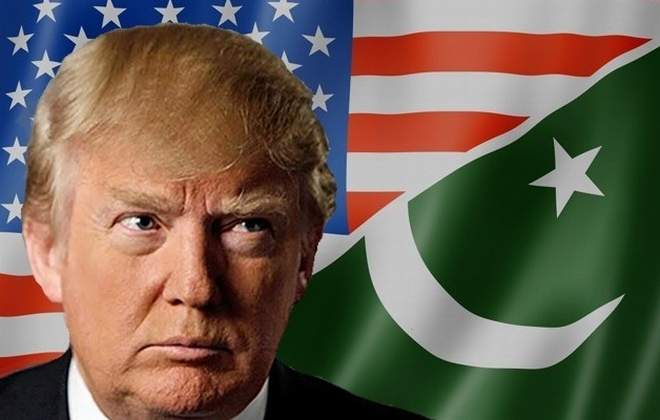There is much ado about nothing over the new US policy on how to end over the 16 year long Afghan war which going by all statistics and battlefields reports, Americans lost years ago. Nonetheless, Americans do not want to be seen as “ yet another superpower defeated in Afghanistan” after the Soviet Union whose strategic miscalculation in its war on Afghans led to its breakup on December 26, 1991.
The US President Donald Trump flexed American military muscles not in the battlefield but through the global media network to hurl threats against Pakistan. However, far beyond media gimmicks, these threats are unlikely to translate into hard military options. As the American military generals know well, the road to peace in Afghanistan leads through nuclear armed Pakistan which is unlikely to surrender its geo-strategic interests at a time when the US has exhibited aggressive policy overtures by allying itself geo-strategically and economically with the country’s arch rival India.
Is there anything new in US Policy?
The tactical cosmetics in the reviewed US policy on Afghanistan range from overt threatening overtones to high pitch propaganda to single out Pakistan for all the mess the US has been through in Afghanistan. It entails tricks which largely revolve around the pressure tactics on Pakistan to a tipping point to compel it to bring defiant Afghan Taliban by hook or by crook to the negotiating table to talk with Afghan government whose writ is largely restricted to Kabul with its symbolic presence in major urban centers and at highways while Taliban militants control much of Afghanistan.
At best, the new Afghan policy can be described as an unwinnable gamble, the contours, tactics, and tricks of which the US repeatedly applied with repeated results of failures in the battlefield and on the diplomatic front in the past. The rest of the policy is by and large same old one which is back in action with avowed threats from a desperately frustrated US President to Pakistan to face consequences for allegedly providing sanctuaries to Afghan Taliban in country’s bordering region with Afghanistan.
Hard US Options on Pakistan
The geo-strategic politics go by hard military realities and not by anything else such as the threats alluded to by the US President against Pakistan. Therefore, there are no hard military options available with the US on Pakistan which is expected to have the third largest nuclear stock pile within next four to eight years, behind only to the United States and Russia, according to Carnegie Endowment for International Peace and the Stimson Center. The reports say that Pakistan, out of its fear of India, is far outpacing its rival neighbour in the development of nuclear warheads and may be building 20 nuclear warheads annually which means Pakistan may possess at least 350 nuclear weapons within the next four to eight years. The US think tank estimates that Pakistan currently possesses as many as 120 nuclear warheads as compared to India’s 100.
Therefore, there are no viable hard military options with the US to militarily strike on suspected hideouts of Afghan Taliban in the bordering tribal belt or beyond until Pakistan once again clandestinely cooperates with Americans. The US has been dependent on Pakistan for gathering intelligence about the whereabouts of the militants. In the recent years, most of the militants killed by the US drone attacks in Pakistan’s tribal region were on the basis of intelligence the military run secret services discreetly provided to the American CIA while the country’s Foreign Ministry kept on harping on the mantra of “breach of sovereignty and US drone attacks being counter productive” only for public consumption in a country rife with rising anti-American sentiments.
Soft Options with the US on Pakistan
There are many soft options available with the US which it may exercise in the event if it is at all willing to pursue the reviewed Afghan policy spelled out by President Trump. Washington has already withheld 350 million dollars – the coalition support fund, the money that the US under existing arrangements is supposed to pay to Pakistan for the military operations it carried out against militants in its tribal areas. Washington can also revoke Pakistan’s status as non-NATO ally under which Islamabad can have access to the advanced US made military hardware, something unlikely to affect Pakistan in any significant manner. In the worst case scenario, Washington can declare Pakistan a state sponsoring terrorism, something not very likely to happen given the strategic repercussions for American military presence in Afghanistan.
Since 9/11, the US has paid Pakistan an estimated 24 billion dollars as financial assistance in different categories while Pakistan’s economic losses for siding with American war are well over 120 billion dollars. However, for the last many years, the US financial assistance has been declining while Pakistan’s dependence on investment and military equipment in China has been on the rise. And that is where lies the answer in case the US further chokes its financial and military aid to Pakistan which is no longer getting billions of dollars from Washington.
Options with Pakistan
Pakistan has reacted cautiously to the threats of President Donald Trump, seen by many psychologists as a psychopath in the United States. Islamabad does not want to have unnecessary confrontation with the US and many within the government in Pakistan do not take threats of Trump very seriously given his known temperamental problems of exhibiting his extreme posturing in addressing major domestic and international issues the policy statements of each of which subsequently have not fully translated into hard actions given their impracticality.
Nonetheless, if the US invokes any soft option, Pakistan may shut down the US led NATO supply line from Karachi to Afghanistan via its northwest and southwestern borders.
Pakistan had suspended the NATO supply line in November 2011 for over nine months after the US “ in friendly fire” killed 28 Pakistani soldiers on borders with Afghanistan. The suspension of supply line had cost over 36 billion dollars to Washington. Islamabad can also suspend intelligence sharing upon which Americans have been relying heavily to target hideouts of militants on the shared border with Afghanistan. And most importantly in the event, American jeopardizes bilateral ties with Pakistan on whatever grounds, their graceful pullout from Afghanistan would become very difficult. As Islamabad would no longer use its influence on Afghan Taliban for a negotiated settlement of lingering Afghan war at a time when Russia and Iran have turned their guns against American interests in the region by supporting Afghan Taliban for their own geostrategic interests.














